Interview with Takashi Sato,
a potter from Mashiko
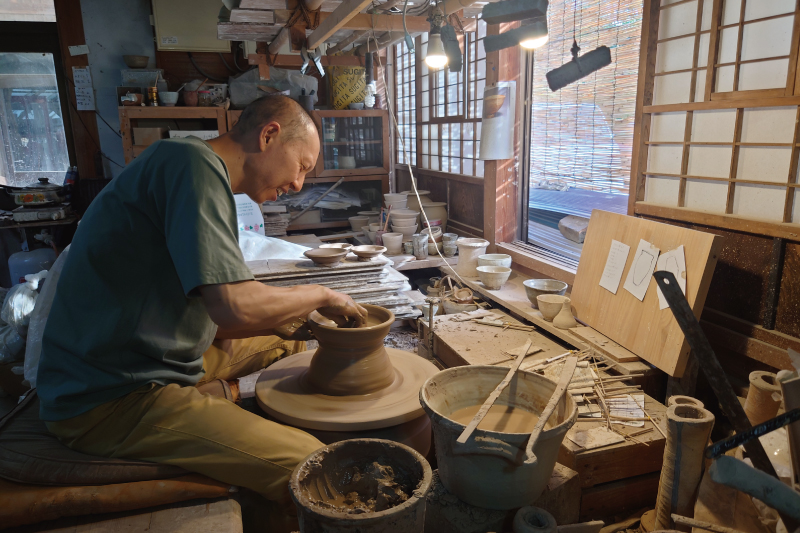
The pale yellow color makes these vessels appear plain and simple, yet also seemingly hints at their delicate craftsmanship.
The potter who creates them is Takashi Sato.
He has inherited the traditional techniques of Mashiko ware, and added a new aesthetic to them to create everyday pottery suitable for modern dining tables.
We asked Mr. Sato about his creations, which are featured in select stores and popular galleries, and also extremely popular among young people.
Passing on Mashiko’s traditions to the next generation.
The key is to keep having fun.
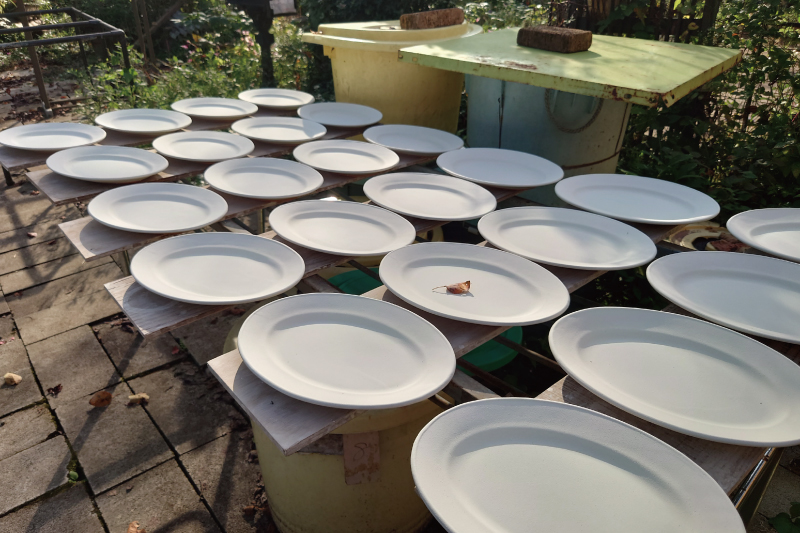
---Your works have a slightly different atmosphere from typical Mashiko ware. What techniques do you use to achieve that?
Sato: I came to Mashiko when I was 25 years old, and at that time, the mood among young potters in Mashiko was to challenge themselves to create works that didn’t necessarily belong to any particular genre. So naturally, I also started experimenting with different glazes instead of sticking to the traditional Mashiko ware style. Through a process of trial and error, I eventually started creating pottery with a yellow coating, called "kikohiki", which is now the main focus of my work.
The term "kikohiki" was coined from the word "kohiki", which is a technique that originated in Joseon, in which the clay is coated with white mud, then glazed and fired to create a milky white finish. New glazes are usually made by mixing several kinds of materials until the right mixture is found, but when I first came to Mashiko, I spent a while trying various glazes and couldn't find one that felt right. At that time, I happened to see a fellow potter using matte glaze. Matte glaze gives a rough texture, and I wondered what would happen if I combined it with kohiki for finishing. The color was beautiful, and I liked it so much that I decided to use it for my own work.
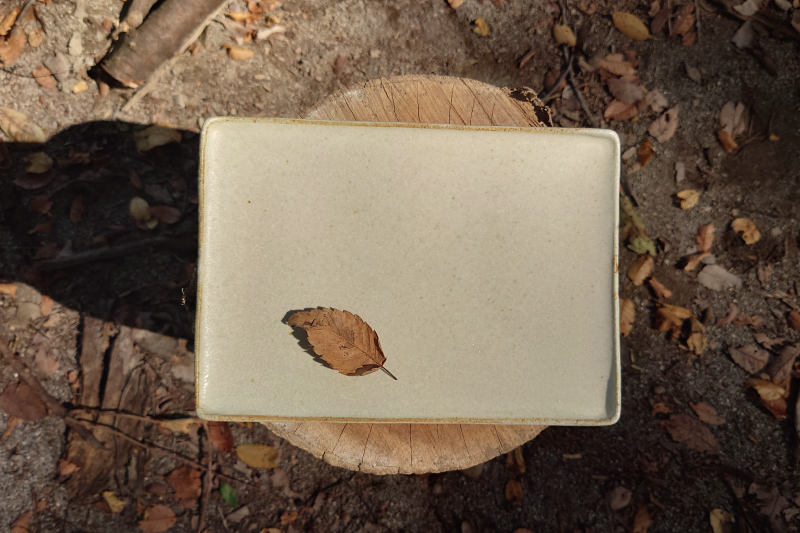
---You said you moved to Mashiko when you were 25 years old, so how did you get started with making pottery?
Sato: I was born in Nagano Prefecture, but I lived in Tokyo until I was 10 years old, and then I moved to Ibaraki Prefecture. The high school I attended there had a pottery class where I was able to use an electric pottery wheel. That was my first encounter with pottery. Ever since I was a child, I always felt confident of my dexterity, and I was generally able to make things exactly as I had envisioned. However, when I tried to use that pottery wheel, I wasn't good with it at all. That really left an impression on me, and I began to feel an urge to try pottery again.
After that, I went to study at a university in the U.S., but I quickly decided that it would be better to pursue a career as a craftsman, so I returned to Japan after one year. After returning to Japan, I worked as an assistant to a potter nearby, and then went to Karatsu for training. I chose Karatsu because I wanted to learn to use a pottery kick wheel. At that time, whenever I saw pottery works in museums, I felt that the old ones were completely different from the ones made by modern artists. I thought that one of the reasons for this was the kick wheel, and I wanted to learn to use it. I also just admired the kick wheel.
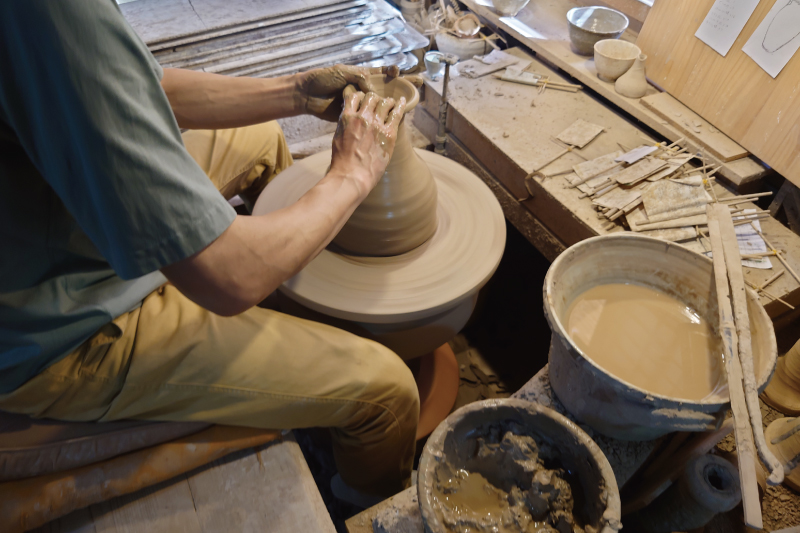
---What made you decide to go to Mashiko after that?
Sato: At that time, there were just a few potters in Karatsu using only the kick wheel to make pottery, so I studied there for about three months before returning to Ibaraki. I was thinking about ways to learn more about the kick wheel, when I went to Mashiko to buy materials and stopped by the exhibition of a certain potter while there. The potter himself happened to be there, and when I told him that I wanted to learn the kick wheel, he said, "Then you should go see Tsuneo Narui."
Tsuneo Narui was well known in Mashiko at the time, and his pottery studio was an open place where neighbors and fellow potters would gather all day long and have tea. When I visited him out of the blue, he even offered me a cup of tea (laughs). I asked him if he could teach me to use the kick wheel, and he refused at first, but after talking with him for a while, he said, "Well, why don't you come once a week?" and so I started coming to his studio.
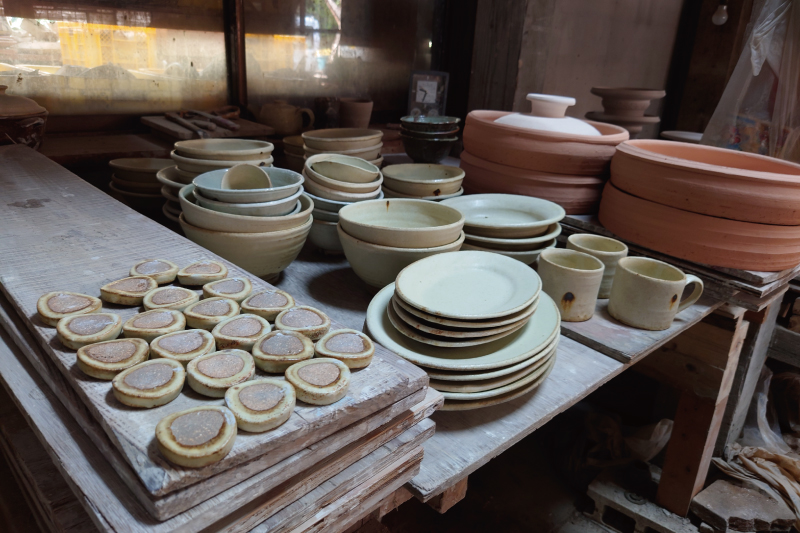
---What did you learn at Mr. Narui's studio?
Sato: We started by kneading the soil. But when I kneaded it using my usual method, he said, "That's wrong!" What I knew about soil kneading was that you had to remove the air from the soil. I had been taught that if there was air left in the soil, it would break when baked. But Mr. Narui's method was the exact opposite, and he told me to leave air in the soil. The idea is to press with your thumb to make holes and let a lot of air get into the soil, making it soft and fluffy just like bread dough. When I used that clay on the pottery wheel, I could feel its airy and soft quality. The difference could be described by comparing pottery made with airless clay to industrial manufacturing, and pottery made with air-filled clay to potatoes harvested from a field. Since air is added to the clay uniformly, it doesn’t crack when baked. As soon as I learned how to make this kind of earthenware, I knew that I was right to have come to Mr. Narui's studio.
Next, I learned how to use the kicking wheel step by step, from just kicking to making small and then large pieces, while learning how to use my hands to shape them.
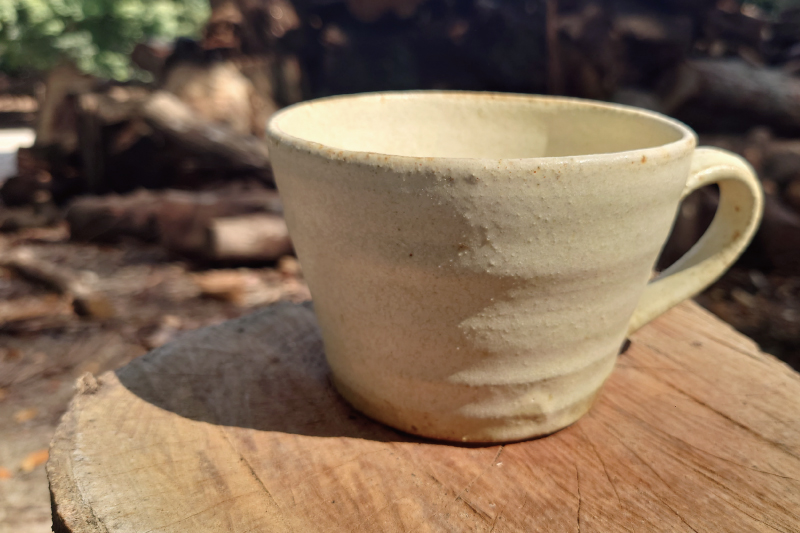
---- While spinning the wheel, you squash part of the vessel inwards, right? Then, when you release your hand, the vessel expands into its shape. This seems like a very unusual way of making pottery.
Sato: That's right. I learned how to use my hands in this way from Mr. Narui, and I think it’s probably an original method of his. Normally, to expand a vessel, you hold the clay between your hands, and stretch it thinly to make it spread out. However, in the method that I learned from Mr. Narui, the clay is stretched by pushing and pulling with the fingers of the left and right hands in various ways.
This is what Mr. Narui described as "moving the soil." This technique works precisely by relying on hands, and I think the way it produces different results from machine techniques is quite interesting.
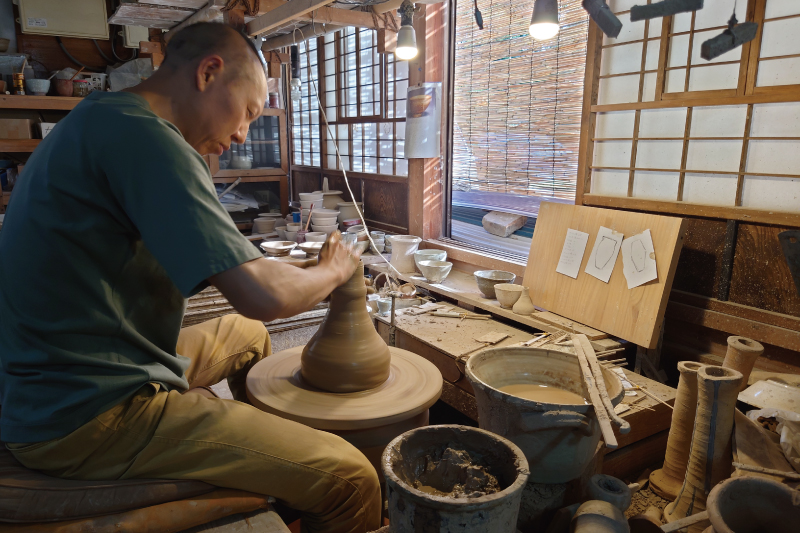
---You studied under Mr. Narui for one year, but after that, did you continue using only the kick wheel?
Sato: Just the kick wheel for me. With the kick wheel, I can make the rotation speed up or slow down before the thought enters my consciousness. The rotation of the pottery wheel is clearly reflected in the work. Some people even say that the speed of the rotation is part of what makes each work unique. I think the interesting thing about the kick wheel is that you can adjust the speed using your own strength and directly transmit the rotation to the clay. Now that I've gotten completely used to it, I'm not thinking of switching back to electric. As long as my legs and back are strong enough to kick, I would like to continue using the kick wheel.
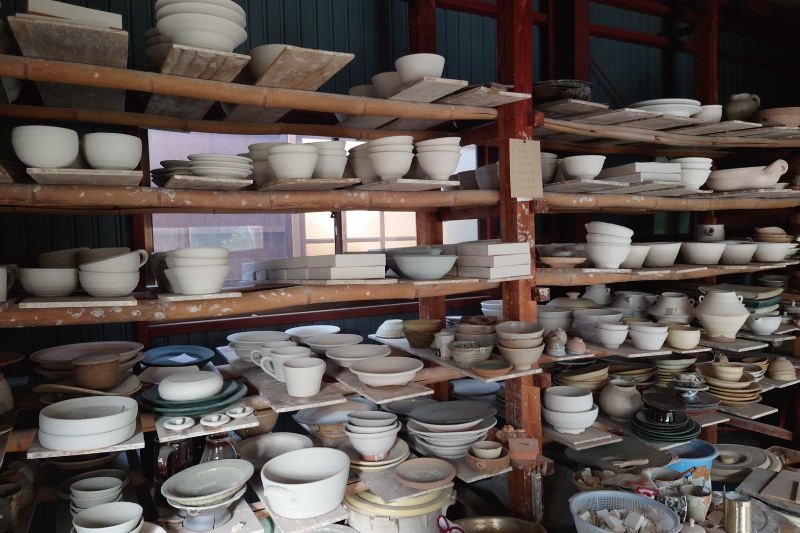
---It would be great if the techniques that you learned from Mr. Narui in Mashiko can be passed on to the next generation.
Sato: That's right. I don't think I would ever have discovered the techniques that Mr. Narui taught me just by myself. On the other hand, anyone can probably do it if they are taught. However, I think the key is to be interested in using this unusual method. Even if it doesn't sell well, I think that the attitude of creating things with a sense of fun shouldn't be allowed to die out.
One of Mr. Narui's sayings, "It's okay to be bad," left a deep impression on me. I take this phrase to mean that we should acknowledge our own inadequacies and still do what we can, little by little, day after day. It's not about more effort or perseverance, it's about finding something you enjoy and continuing to do it. My wish is to live my life affirming my own interests, and knowing that continuing to do what I enjoy is enough.
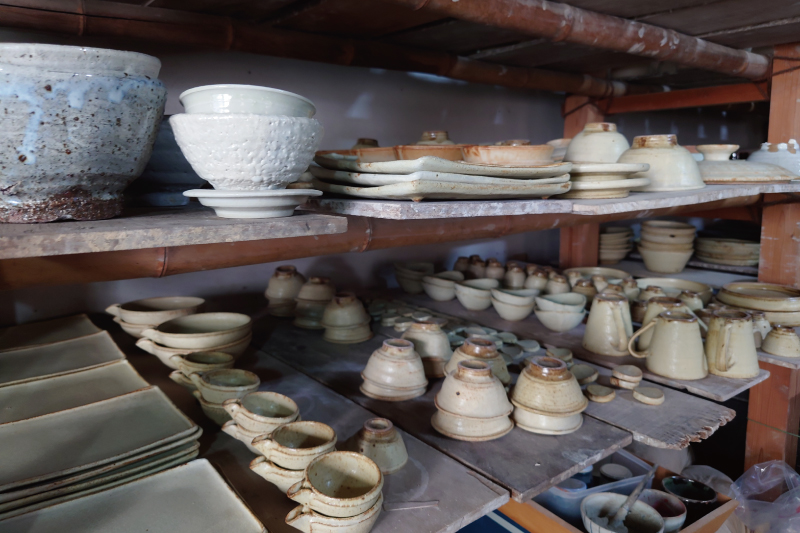
---Lastly, what is the appeal of Mashiko for you?
Sato: I think it's the fact that it's close enough to Tokyo that you can come here on a day trip, and people can easily gather and meet each other here. Many people involved in craftsmanship live here, and I get a lot of inspiration from them. The people here are also very welcoming of newcomers.
If people come from overseas wanting to learn the kick wheel, I would be happy to teach them.
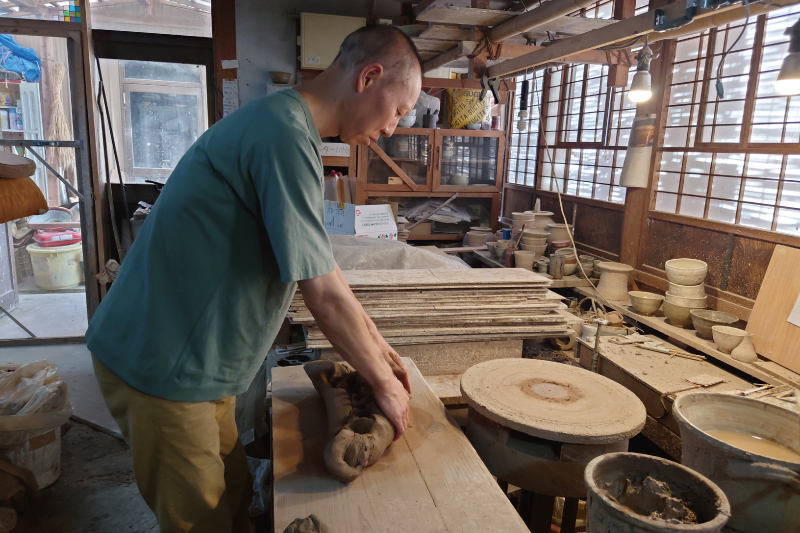
Profile
lib company representative
Born in Nagano Prefecture in 1976. Lived in Tokyo and Ibaraki Prefecture until graduating from junior high school.
First came into contact with the pottery wheel during a class in high school.
After studying at a university in the U.S. for a year, he trained for three months in Karatsu, and began working in Ibaraki.
At the age of 25, he studied under Tsuneo Narui, a potter in Mashiko, and has been working in Mashiko ever since.
His works are sold on Starnet and other sites.



















